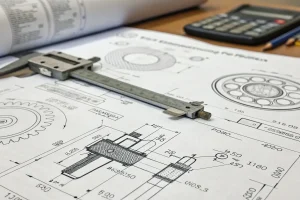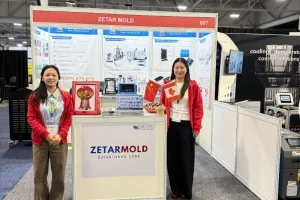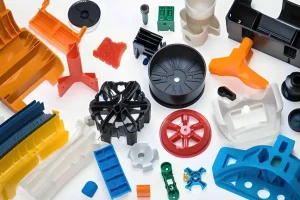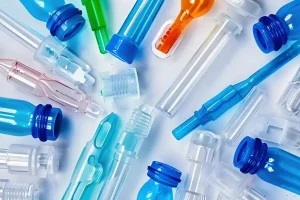Injection molding is the process of creating a part from molten plastic materials. This process can be used to create parts from a variety of materials, including plastics, metals, and ceramics.

To create the best possible part, it is important to use the right type of material. In this blog post, we will discuss the most common materials used in injection molds.
The basic material commonly used for injection molds is plastic mold steel, the required indexes are, mold steel hardness, mold steel mirror polishing performance, mold steel rust resistance, mold steel wear resistance, and so on.
Injection mold steel, also known as plastic mold steel, is mainly used for plastic forming molds. Plastic mold in the mold manufacturing in the first place.

These are the top six materials used throughout the industry: Polypropylene (PP) Acrylonitrile Butadiene Styrene (ABS) Polyamide (Nylon) High-Density Polyethylene (HDPE) Polycarbonate (PC) ABS + PC Blend (mostly used for electronics enclosures).
Plastic mold steel classification is more. There are mainly: pre-hardened plastic mold steel, age-hardened mold steel, corrosion-resistant mold steel, easy-cutting mold steel, martensitic aging plastic mold steel, mirror-polished plastic mold steel. Mirror polished plastic mold steel.
Commonly used steel for plastic molds
2311 mold steel, P20 mold steel, 738H mold steel, 718H mold steel, NAK80 mold steel, 2083 mold steel, S136 mold steel, breathable steel PM-35.
Inner die parts (die kernel, slide block, inclined top, insert, etc.) steel:
(1) No requirements of the mold, the cheapest or not many times:
45# (C1045 American standard CK40 German standard S45C Day standard), 50# (C1045 American standard CK53 German standard S50C day standard)
(2) General requirements:
P20 pre-hard plastic die steel (P20 American standard 1.2311 German standard 618 Sweden 3Cr2Mo national standard)
(3) High demand mold:
718 super pre-hard plastic mold steel (P20+Ni American standard 1.2738 German standard 718 Swedish 3Cr2NiMo national standards)
(4) Higher requirements of mold:
738 (4Cr2NiMnMo national standard)
(5) The mold needs to be polished into mirror luster:
NAK80 (P21H NAK80 day standard 12Ni3 GB) mirror plastic mold steel
(6) Corrosion-resistant plastic mold:
It is used when the corrosive gas corrodes the steel when the plastic-type is injected: M300 corrosion-resistant steel (Austria) (3Cr17Mo national standard). Which needs to be polished for a mirror S136H corrosion-resistant mirror die steel (420 US standard 1.2083 German standard S136H Sweden 3Cr13 GB standard)

Common Plastic Injection Molding Material
PC is commonly used for greenhouses, digital disks like DVDs, eyewear lenses, medical devices, automotive components, and cellular phones.
Polyamide (Nylon) Nylon material is used in a large range of different applications because of its electrical properties, toughness, wear resistance,e and chemical resistance being quite impressive.
Nylon has a high level of stability (helps with strength) and is resistant to many external factors like abrasion, impact, and chemicals.
Some thermoplastics are very sturdy and rigid, while others are flexible and rubber-like. Some are clear and others are opaque. It is this diversity that makes thermoplastics such an appealing material for manufacturers.
However, ABS lacks the superior chemical resistance of other common blow molding plastics. High-Density Polyethylene (HDPE) HDPE’s desirable physical properties—including chemical resistance, temperature resistance, and a high strength-to-density ratio—make it one of the most popular blow molding materials.
HDPE is easily molded and suitable for both consumer goods and industrial applications, including a wide range of bottles and containers.
TV and audiovisual (AV) equipment parts, bicycle trailers, toys, gasoline tanks, hot and cold drinking cups, and computer housings. Although HIPS is flammable, flame-retardant varieties are available. LDPE The most flexible type of polyethylene, low-density polyethylene (LDPE) offers superior moisture resistance, high-impact strength, good chemical resistance, and translucence.

Thermoplastic Rubber (TPR) resin is a mixture of plastic and rubber, and it’s easy to use in the injection molding process. It has outstanding chemical and weather resistance and high impact strength. Because of this, TPR is used in many types of fluid dispensers, flexible hoses, catheters, and other places containing different liquids, including acid.
Mould frame steel
General minimum requirement:
45# (C1045 American Standard, CK40 German Standard, S45C Japanese Standard)
Commonly used:
50# (C1045 American Standard, CK53 German Standard, S50C Japanese Standard)
Common requirements of large mold frame:
55# (C1045 American standard, CK56 German standard, S55C national standard)
High requirements, large mold frame:
GS638 (P20 American standard GS638 German standard 42CrMo national standard)
Steel for accessories:
Guide pillar:
20# (S20C) or 20Mn2B (SMn420), treatment: carburizing and quenching, hardness after treatment is greater than 55HRC
T8A, T10A, treatment:
surface quenching, the hardness after treatment is less than equal to 55HRC
45# treatment: tempering, surface quenching, low-temperature tempering, hardness greater than 55HRC after treatment
Guide sleeve:
brass H62 or bronze alloy
Bushing:
45#, 50#, 55# treatment: surface quenching, hardness greater than 55HRC
Pushrod, thimble, drawbar, etc.:
T8, T8A, T10, T10A Treatment: quenching, low-temperature tempering, hardness greater than equal to 55HRC
45#, 50#, 55# treatment: quenching, hardness greater than or equal to 45HRC
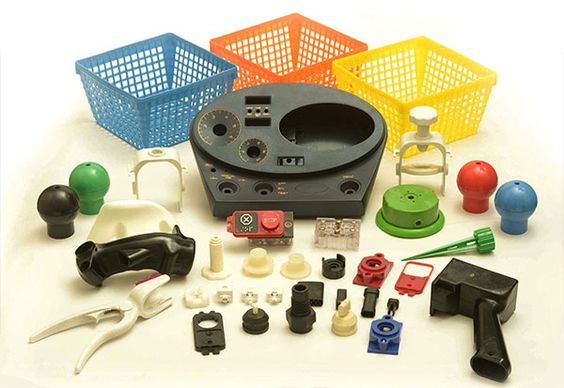
Requirements for the selection of injection mold steel
(1) High corrosion resistance
Many resins and additives have a corrosive effect on the surface of the cavity, which makes the surface of the cavity metal corrosion, flaking, surface conditions deteriorate, the quality of plastic parts deteriorate.
Therefore, it is best to use corrosion-resistant steel, or chromium-plating and cyanide nickel treatment on the surface of the cavity.
(2) Good wear resistance
The gloss and precision of the surface of injection molded parts are directly related to the wear resistance of the cavity surface of the injection mold, especially when glass fiber, inorganic fillers, and certain pigments are added to some plastics.
They and the plastic polymer melt together in the runner, mold cavity high-speed flow, the cavity surface friction is very large if the material is not wear-resistant, will soon wear, so that the quality of plastic parts by damage.
The higher the density of the polyethylene material used the stronger, more rigid, and more heat resistant the plastic is. The primary uses of polyethylene are plastic bags, plastic films, containers including bottles, and geomembranes. Polycarbonate Polycarbotics aisa naturally transparent amorphous thermoplastic.
(3) Excellent dimensional stability
In custom injection molding, the temperature of the injection mold cavity should reach 300℃ or more.
For this reason, it is best to use the appropriate tempering treatment of tool steel (heat treatment steel).
Otherwise, high melting point plastic material will cause changes in the microstructure of the material, resulting in changes in the size of the injection molds.

(4) Easy to process
Mold parts are mostly made of metal materials, some structure shapes are also very complex, to shorten the production cycle, improve efficiency, require mold materials easy to process into the shape and precision required by the drawings.
(5) Good polishing performance
Injection-molded parts usually require a good gloss and surface condition, so the cavity surface roughness is very small, so that the cavity surface must be surface processing, such as polishing, grinding, etc. Therefore, the selected steel should not contain rough impurities and porosity, etc.
(6) Low influence by heat treatment
To improve the hardness and wear resistance, the injection mold should be heat-treated, but this treatment should make its size change very little. Therefore, it is best to use pre-hardened steel that can be machined.

Summary
Through this piece of article, you have a certain understanding of injection molding steel.
While it takes some practice to know when to use reaction injection molding, when the time comes, you should use thermoplastic polyurethane. Soft and elastic, thermosetting polyurethane is the ideal solution for this type of molding because the plastic solidifies and expands post-injection.
Acrylonitrile Butadiene Styrene Acrylonitrile butadiene styrene, usually shortened to ABS, is a thermoplastic known for its strength and impact resistance. Because of its physical properties, you can find ABS in items like computer keyboards, electrical outlets, and car dashboards.

In the selection of injection mold steel should be combined with the project plastic material characteristics, product surface treatment, the number of products comprehensive consideration of the mold steel.
To ensure the quality of the product, the premise of the mold life is to obtain the maximum economic benefits.
If you have an injection mold project that you are planning to make, and you are not very knowledgeable about the industry, you can ask Zetarmold to assist you, just tell us the above basic information, and provide the project drawings, we can provide you with a quote in the most reasonable way.


